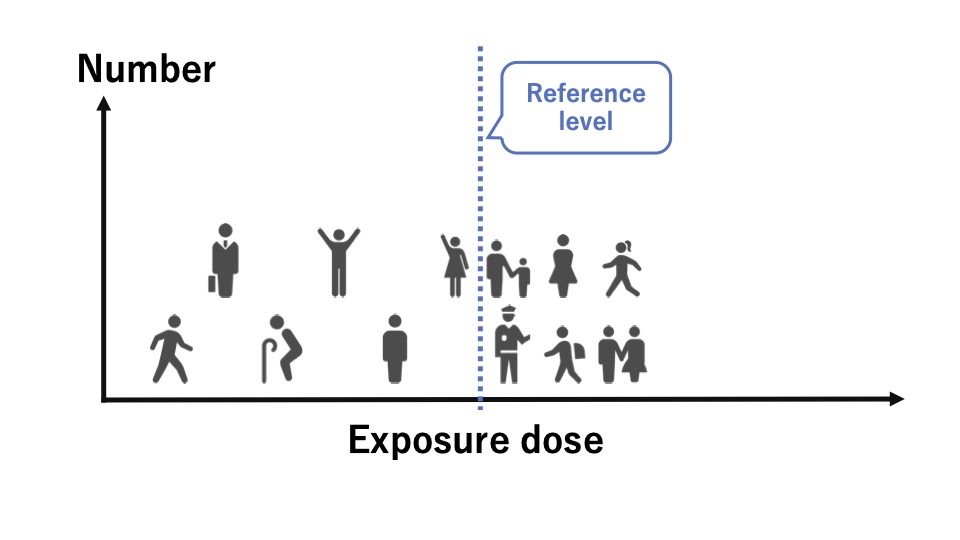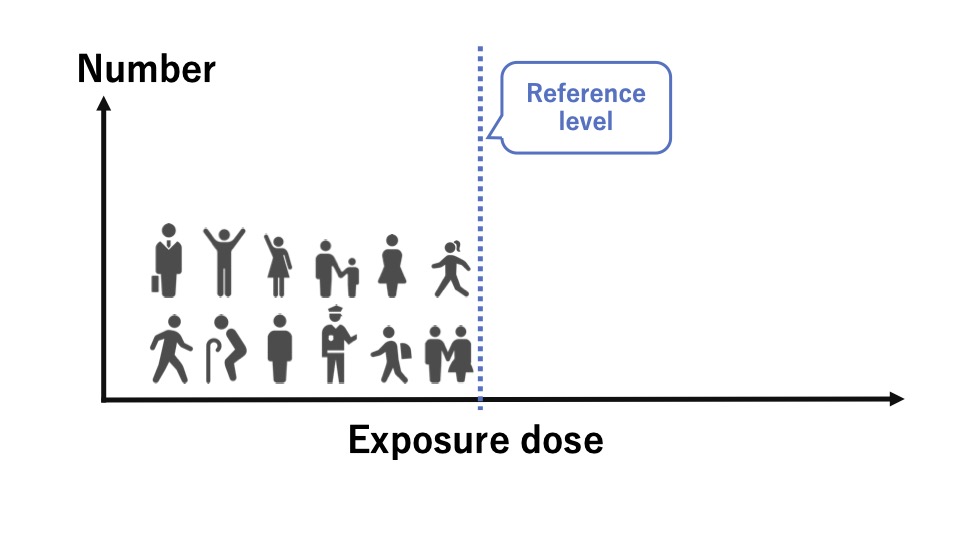Hello, everyone. My name is Daichi, an expert providing the information on the radiation issues in an easy-to-understand manner.
In this article the categories of exposure situations are covered and in this article the categories of exposure, as well as the concept of radiation protection under the planned exposure situations are covered.
This article, as a continued article from the previous ones, responses to the following request.
– I would like to know the basic concepts of radiation protection under the emergency and existing exposure situations.
Table of contents of this article
- (Radiation Protection under the emergency situations etc is covered) Categories of exposure situations (Vol. 3)
- Public exposure
- Reference level
- Occupational exposure
- Dose limit
- Summary
I have been involved with the radiation-relevant issues, like the policy on the decontamination activities and the management of the Interim Storage Facility, after the accident of the Fukushima Daiichi Nuclear Power Plant in 2011.
I received a doctorate in the field of radiation, while working in Fukushima.
(Radiation Protection under the emergency situations etc is covered) Categories of exposure situations (Vol. 3)
The concepts of radiation protection under the emergency exposure situations and the existing exposure situations, are different between the public exposure and the occupational exposure.
Therefore, the concepts of the radiation protection are indivisually explained below, for the emergency exposure situations and the existing exposure situations, respectively.
Please visit this article, if you would like to know more about the categories of exposure situations (i.e. planned, emergency and planned).
Please visit this article, if you would like to know more about the categories of exposure (i.e. occupational, medical and public).
Public exposure
Under the planned exposure situations, the measures are prioritized to reduce the risk of the generation of cancers in the future.
However, under the emergency and existing exposure situations, the measures to prevent the serious negative impact on human health are prioritized.
In this case, the ‘Reference level’ is a very important concept/index for the radiation protection of the public.
Reference level
Once an accident of a nuclear power plant or other emergency incidents occur, a spectrum of people would come up with high exposure dose to low exposure dose, according to the level of contamination (Please see the Figure 1).
In this case, as aforementioned, the measures for the people with high dose (e.g. evacuation) are supposed to be prioritized, to prevent serious negative impact on people’s health.
For this, the targeted value as a reference for the reduction of the dose becomes necessary, and the value is called the ‘reference level’.
As a result of the measures, if the dose of people is reduced below the reference level, to some extent (Please see the Figure 2), the reference level is supposed to be set again in a lower level, as long as reasonably achievable (Please see the Figure 3).
For the next, the measures are prioritized to be taken, for the people with dose higher than the newly established reference level, with the aim of further reduction of dose (Please See the Figure 4).
By repeating this, based on the principle of the optimization of protection and safety, the measures will be continuously implemented, to reduce the dose as long as reasonably achievable.

↑ Figure 1

↑ Figure 2

↑ Figure 3

↑ Figure 4
However, it is not necessarily regarded justified, to set the reference level, simply as low as possible.
Instead, it needs to be noted, that the reference level is necessary to be set, taking account of other benefits in the society, or the risk which might cause as a result of excessive implementation of measures for radiation protection.
ICRP (International Commission on Radiation Protection) recommends to set the reference levels for each exposure situations as follows:
– Emergency exposure situations: in the range of 20 and 100 mSv/y
– Existing exposure situations: from the lower part of 1 to 20 mSv/y band
Occupational exposure
Regarding the occupational exposure under the emergency and existing exposure situations, basically the concept of dose limit is applied, as is the case with the radiation protection under the planned exposure situations.
If you would like to learn more the dose limit, please visit this article.
Dose limit

First, under the emergency exposure situations, an exposure dose of 50mSv is applied.
Higher dose is applicable, however, according to the types of necessary activities (e.g. life-saving), by providing appropriate information or health check to relevant workers.
Amongst a variety of activities under the existing exposure situations, to the activities related with the recovery after the incidents/accidents, the following dose limit is applied, as is the case with the planned exposure situations.
– 100mSv per 5years and 50mSv per every single year (effective dose)
The application of the dose limits under the emergency and existing exposure situations, is based on the concept, as applied under the planned exposure situations, that exposure dose of workers is supposed to be managed, with monitoring using dosimeter, periodical health checkup and so on.
In addition, the dose limit can be reviewed to higher level, according to the situation, especially under the emergency exposure situations, although the upper limit is of course needed to be carefully considered for their health.
Summary
Here the concept of radiation protection under the emergency exposure situations and the existing exposure situations are elaborated.
The concept is different between the public exposure and the occupational exposure.
To the public exposure, an index, the ‘reference level’ is applied to be complied with the principle of optimization of protection and safety.
To the occupational exposure, for example, specifically to the occupational exposure relevant to the recovery activities after the accident, the concept of dose limit is applied.
However, the specific value of the dose limit can be changed, according to the specific contents of operations, especially under the emergency exposure situations.
By the way, the following videos are created, which explain the almost same contents above.
Please take a look at them at your convenience.
– Japanese version
– English version
This is the end of this article.
You can read the same article in Japanese here.
Thank you very much for reading this article.
See you next time!



コメント